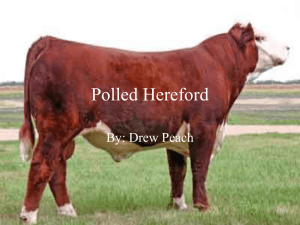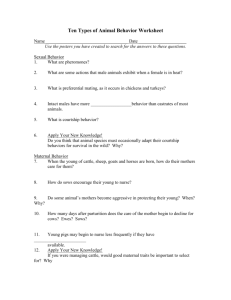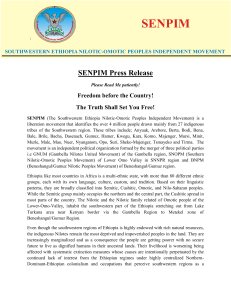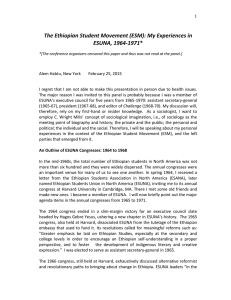Characterization and exploitation of the unique genomes and
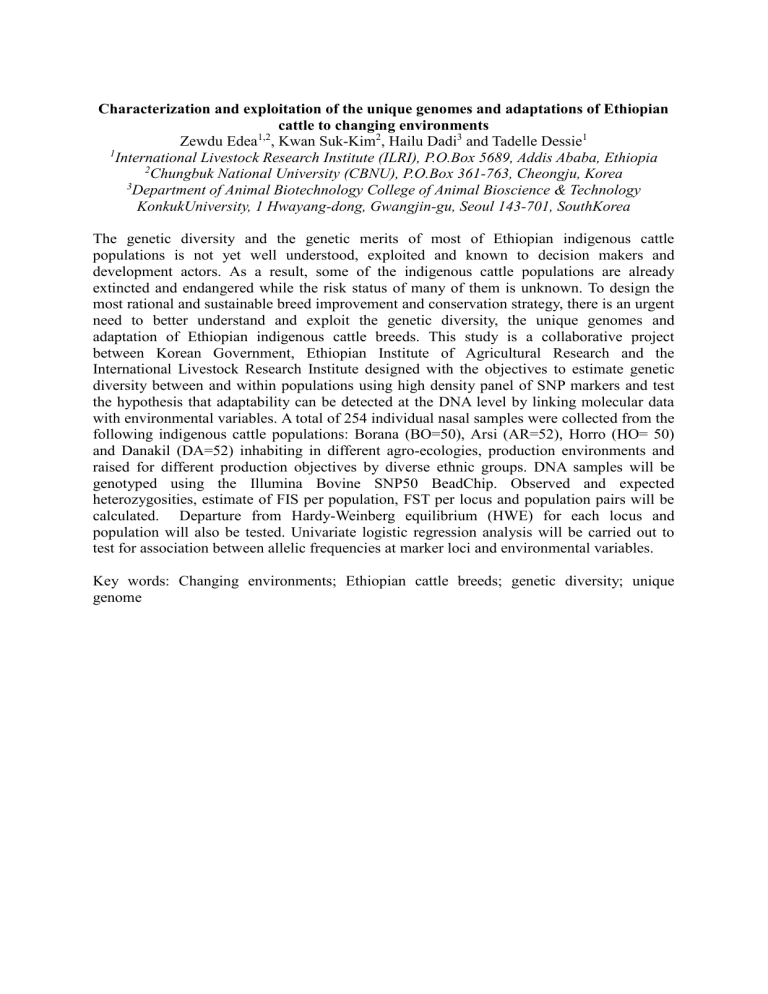
Characterization and exploitation of the unique genomes and adaptations of Ethiopian
Zewdu Edea cattle to changing environments
1,2
, Kwan Suk-Kim
2
, Hailu Dadi
3
and Tadelle Dessie
1
1
International Livestock Research Institute (ILRI), P.O.Box 5689, Addis Ababa, Ethiopia
2 Chungbuk National University (CBNU), P.O.Box 361-763, Cheongju, Korea
3
Department of Animal Biotechnology College of Animal Bioscience & Technology
KonkukUniversity, 1 Hwayang-dong, Gwangjin-gu, Seoul 143-701, SouthKorea
The genetic diversity and the genetic merits of most of Ethiopian indigenous cattle populations is not yet well understood, exploited and known to decision makers and development actors. As a result, some of the indigenous cattle populations are already extincted and endangered while the risk status of many of them is unknown. To design the most rational and sustainable breed improvement and conservation strategy, there is an urgent need to better understand and exploit the genetic diversity, the unique genomes and adaptation of Ethiopian indigenous cattle breeds. This study is a collaborative project between Korean Government, Ethiopian Institute of Agricultural Research and the
International Livestock Research Institute designed with the objectives to estimate genetic diversity between and within populations using high density panel of SNP markers and test the hypothesis that adaptability can be detected at the DNA level by linking molecular data with environmental variables. A total of 254 individual nasal samples were collected from the following indigenous cattle populations: Borana (BO=50), Arsi (AR=52), Horro (HO= 50) and Danakil (DA=52) inhabiting in different agro-ecologies, production environments and raised for different production objectives by diverse ethnic groups. DNA samples will be genotyped using the Illumina Bovine SNP50 BeadChip. Observed and expected heterozygosities, estimate of FIS per population, FST per locus and population pairs will be calculated. Departure from Hardy-Weinberg equilibrium (HWE) for each locus and population will also be tested. Univariate logistic regression analysis will be carried out to test for association between allelic frequencies at marker loci and environmental variables.
Key words: Changing environments; Ethiopian cattle breeds; genetic diversity; unique genome


